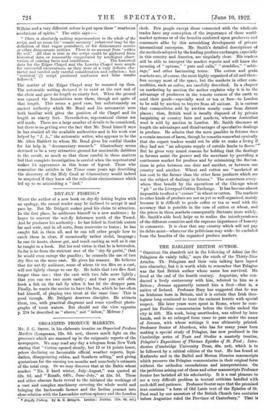DRY-FLY FISHING.*
WHEN the author of a new book on dry-fly fishing begins with an apology, the casual reader may be inclined to accept it and pass by. But Mr. Bridgett makes good his claim to attention. In the first place, he addresses himself to a new audience ; he hopes to convert the wet-fly fishermen north of the Tweed. And ho produces his authority : he has fished in Scottish waters far and wide, and in all sorts, from reservoirs to burns ; he has caught fish in them all, and he can tell other people how to catch them in clear, if occasionally rather stolid, language ; he can tie knots, choose gut, and teach casting as well as it can be taught in a book. But his real virtue is that he is heterodox. So far is he from the strictest sect of the " dry-fly purist," that he would even enrage the pundits ; he counsels the use of two dry flies on the same cast. He gives his reasons. He believes that his wet-fly audience, some of whom tie ten flies on a cast, will not lightly change to one fly. He holds that two flies float longer than one ; that the cast with two falls more lightly ; that you can see two more easily ; and that you will often hook a fish on the tail fly when it has let the dropper pass. Finally, he wants the novice to have the fun, which he has often had himself, of playing two trout at the same time. This is good enough. Mr. Bridgett deserves disciples. He attracts them, too, with practical diagrams and some excellent photo- graphs of trout waters. But should not the view opposite p. 258 be described as " above," not " below." Melrose ?


































 Previous page
Previous page